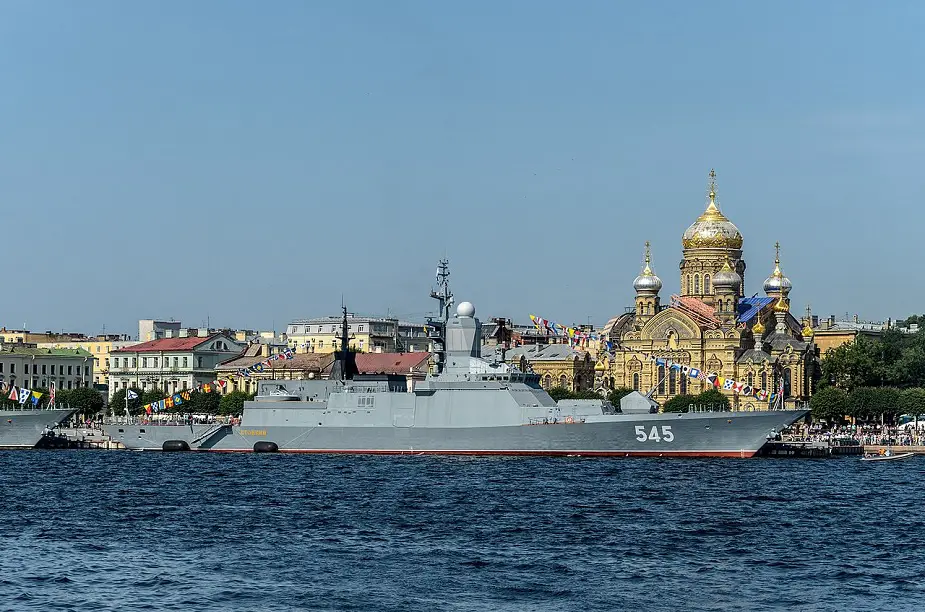Breaking news
Project 20380 corvettes to be completed by late 2021.
The construction of project 20380 corvettes will end in late 2021. It is a historical event for the Navy. For the first time in the post-Soviet period the industry produced a full series of corvettes. Ten warships of the project will be built. Project 20380 will be replaced by upgraded project 20386, the Izvestia daily writes.
 Corvette Stoiky in Saint Petersburg (Picture source: Alex 'Florstein' Fedorov)
Corvette Stoiky in Saint Petersburg (Picture source: Alex 'Florstein' Fedorov)
The last two project 20380 corvettes, the Aldar Tsydenzhapov and the Rezky will join the Pacific fleet. The former will be floated in August 2019 and will join the fleet after acceptance trials in 2020. The Rezky will join the Navy in 2021.
Over 70 design bureaus, research organizations and industrial enterprises developed the project. The corvettes were built by shipyards in St. Petersburg and Komsomolsk-on-Amur. They are universal warships, former Navy Chief-of-Staff Admiral Valentin Selivanov said.
"The corvettes can effectively fight surface warships and submarines. They can replace three classes of brown-water warships - small missile ships and boats, as well as small antisubmarine ships. They will do it effectively, as they carry the latest weapons," he said.
Project 20380 corvettes operate in brown waters and fight surface warships and submarines, protect convoys, patrol zones of blockade, and provide artillery and fire support to seaborne assault. The weapons can effectively strike at ground objects.
Numerous new technologies were tested in the construction. In particular, the warships were built with stealth technologies. The superstructure has a broken shape and is produced of multilayered composite materials to decrease radar visibility.
The underwater hull was designed to decrease water resistance at a high speed which increased 1.5-2 times.
The corvettes are armed with Uran antiship complex with two launchers for Kh-35 missiles. They also have the universal 100mm artillery gun A-190. Two 30mm artillery guns AK-630M and Redut complex ensure air defense. Antitorpedo Paket-NK can be used against advancing torpedoes and against submarines.
The corvettes are equipped with Minotavr-M acoustic sonars with a long towed antenna to detect adversary submarines. There is a stern hangar for one Ka-27 helicopter. Specific attention was paid to fire and explosion-resistance and protection against adversary arms to increase survivability in combat.
The latest corvettes in the series received Sigma-20385 combat information and control system which can take over control of the warship in a combat situation. It unites all onboard equipment, reconnaissance and monitoring means. When a target appears, all elements operate automatically from the moment of detection to destruction.
The corvettes symbolize the revival of the shipbuilding industry, expert Dmitry Boltenkov said. "They are successful and balanced warships with proper arms and running qualities. They have made long sorties without problems. Baltic fleet corvettes sailed to the North Atlantic and the Gulf of Aden. They can be effectively engaged in the Baltic, Black and Mediterranean Seas, the Sea of Japan or near Kamchatka," he said.
The Navy is currently working to upgrade brown-water warships, the Izvestia said.
© Copyright 2019 TASS. All rights reserved. This material may not be published, broadcast, rewritten or redistributed.



























